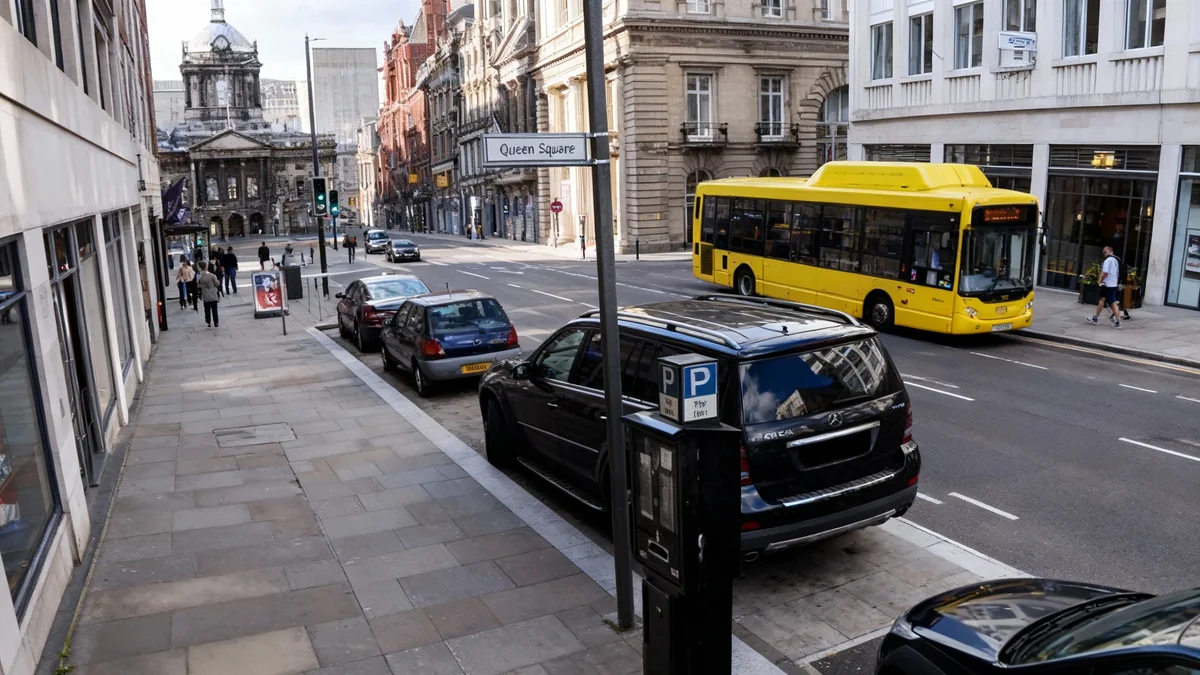A significant regeneration effort is underway in Croxteth, led by Cobalt Housing, which is investing millions to build new homes and modernise existing estates. The initiative addresses concerns that Liverpool's outer areas have been neglected while development has focused on the city centre.
Claire Griffiths, CEO of Cobalt Housing, has emphasised the need to support these communities, warning that they "can't afford to be left behind." The housing association is spearheading projects to improve housing, tackle historical stigmas, and create better opportunities for residents.
Key Takeaways
- Cobalt Housing has announced a £25 million investment package for the Stonedale Estate in Croxteth.
- The regeneration includes the construction of 215 new affordable homes, with 145 already completed.
- A key goal is to overcome the negative stigma associated with the area's 1960s "Radburn" estate design.
- Leaders are calling for improved transport links to connect residents with employment opportunities on the East Lancashire Road.
A Call for Balanced Regeneration
While high-profile projects like Bramley-Moore Dock and the potential revival of Festival Gardens capture public attention, leaders in the housing sector are urging a renewed focus on Liverpool's outer estates. These areas, including Fazakerley, Croxteth, and Norris Green, are home to thousands of residents who feel disconnected from the city's central growth.
Claire Griffiths, who has led Cobalt Housing since 2022, is a prominent voice advocating for this shift in priorities. The association manages approximately 6,000 homes, which were transferred from Liverpool Council in 2003.
"One of the drums I'll always be banging is let's help our outer estates. They have been left behind. We've got to show that we can deliver some regeneration and benefits elsewhere."
Griffiths argues that investing in these neighbourhoods is crucial for social cohesion and demonstrates a commitment to equitable development across the entire city.
Background: Cobalt Housing
Formed in 2003, Cobalt Housing took over the management of thousands of council homes in north and east Liverpool. The association operates as a not-for-profit organisation, reinvesting its resources into maintaining and improving housing stock and supporting local communities.
Focus on Croxteth: Overcoming Stigma
Croxteth is a primary focus for Cobalt's regeneration efforts. Despite its strong community spirit and high demand for housing—often receiving 100 applications for every available property—the area has historically battled a reputation for crime and anti-social behaviour.
"In some people's minds it may still be stigmatised in terms of crime," Griffiths explained. "In reality, it's really quite different."
A major part of this effort is the £25 million investment into the Stonedale Estate. This initiative follows the successful completion of other local projects, including the 88-home Waterdale Gardens development, which provided a mix of affordable rent, shared ownership, and rent-to-buy properties.
Redesigning the Stonedale Estate
The Stonedale Estate, built in the 1960s, presents a unique challenge. Its design is based on the "Radburn layout," a model once popular in new towns like Runcorn and Skelmersdale.
This design separated pedestrian walkways from roads, with homes often facing onto green spaces. While intended to create a safer, community-focused environment, the layout has been criticised for creating poorly overlooked areas that can contribute to anti-social behaviour.
"It was an idea in the 1960s and '70s around walkways, putting the cars somewhere else and everyone looking out for each other. The problem is, when that didn't work... they became problematic."
Cobalt's plan involves modernising the estate's layout to address these long-standing issues and improve the quality of life for a community that has lived there for generations.
Stonedale Regeneration by the Numbers
- £25m: Total new investment in the Stonedale Estate.
- 145: Affordable new homes already constructed in the wider area.
- 70: Additional social rent homes planned, supported by an £8.4m grant.
- £20m+: Cost of the latest phase, including public realm improvements.
Building Homes and Confidence
The regeneration of the wider Stonedale area has already delivered 145 affordable homes. A recent funding boost of £8.4 million from Homes England will enable the construction of 70 more social rent properties. This latest phase represents over £20 million of investment when accounting for public space and estate-wide improvements.
Griffiths notes that making bold investment decisions in areas the private sector might overlook is key to sparking wider change. The Waterdale Mews project, built on land near the Showcase Cinema, offered 88 units, with half designated for shared ownership.
"By being prepared to take the risk on a low-value area, which we have, that increases the confidence and the values in neighbourhoods," she stated. This approach is designed to attract further public and private investment, rehouse existing residents in modern homes, and welcome new people to support local schools and businesses.
The strategy is carefully balanced to avoid gentrification. "You don't want to price people out of the market, but we're quite a long way from that at the moment," Griffiths added.
Connecting Communities to Opportunity
Beyond building homes, a central goal of the regeneration is to break down the physical and psychological barriers that isolate Croxteth. Griffiths, who also chairs Liverpool City Region Housing Associations, believes improved transport is essential.
The East Lancashire Road, a major artery running nearby, hosts significant employment opportunities. However, poor public transport links make it difficult for residents to access these jobs.
"The East Lancs is a real barrier - a physical and psychological barrier, but if we could include better transport links from those employment opportunities to our estate, there's a huge amount of potential," she said.
Collaboration with the Liverpool City Region Combined Authority is seen as vital to achieving this. Better transport would not only connect residents to jobs within Liverpool but also to neighbouring areas like Knowsley and St Helens.
Ultimately, the investment aims to empower a community that has often had to be self-reliant. "Croxteth has had to be insular to survive," Griffiths concluded. "What we're trying to do is look out and say 'this is your city as well - we're part of this city region and there will be opportunities for you and your children'."





